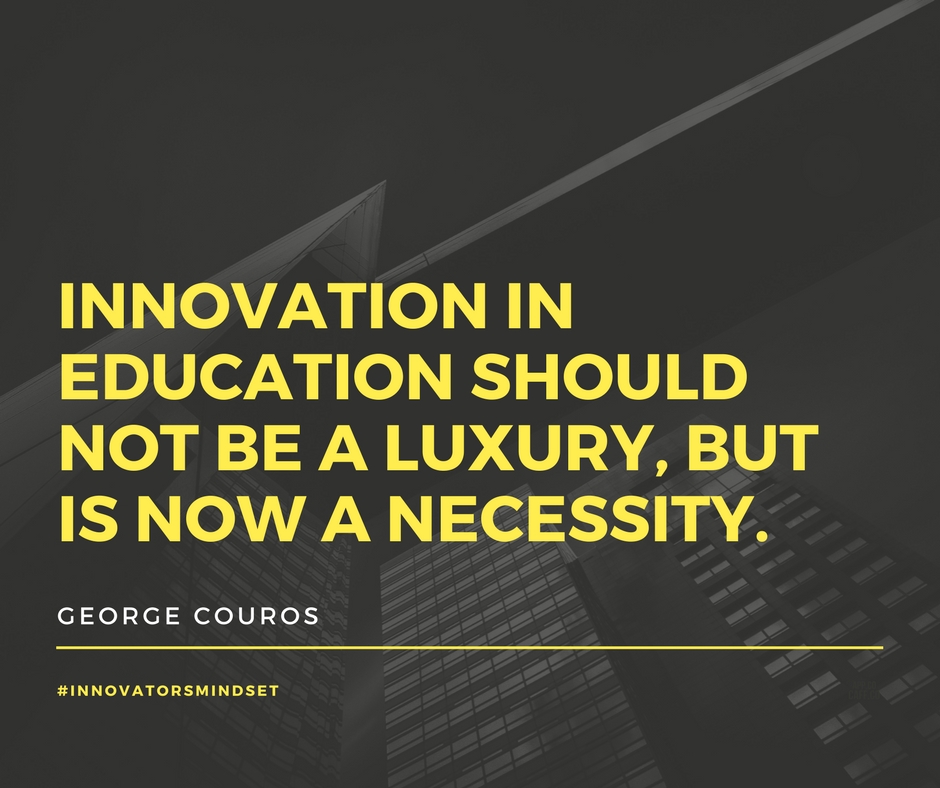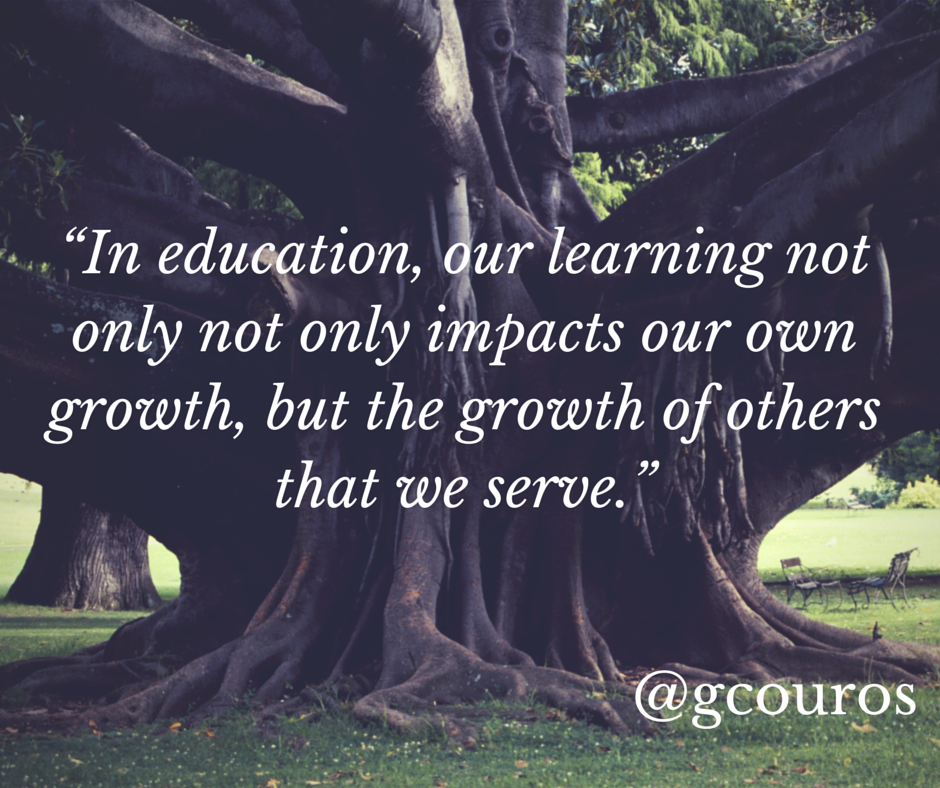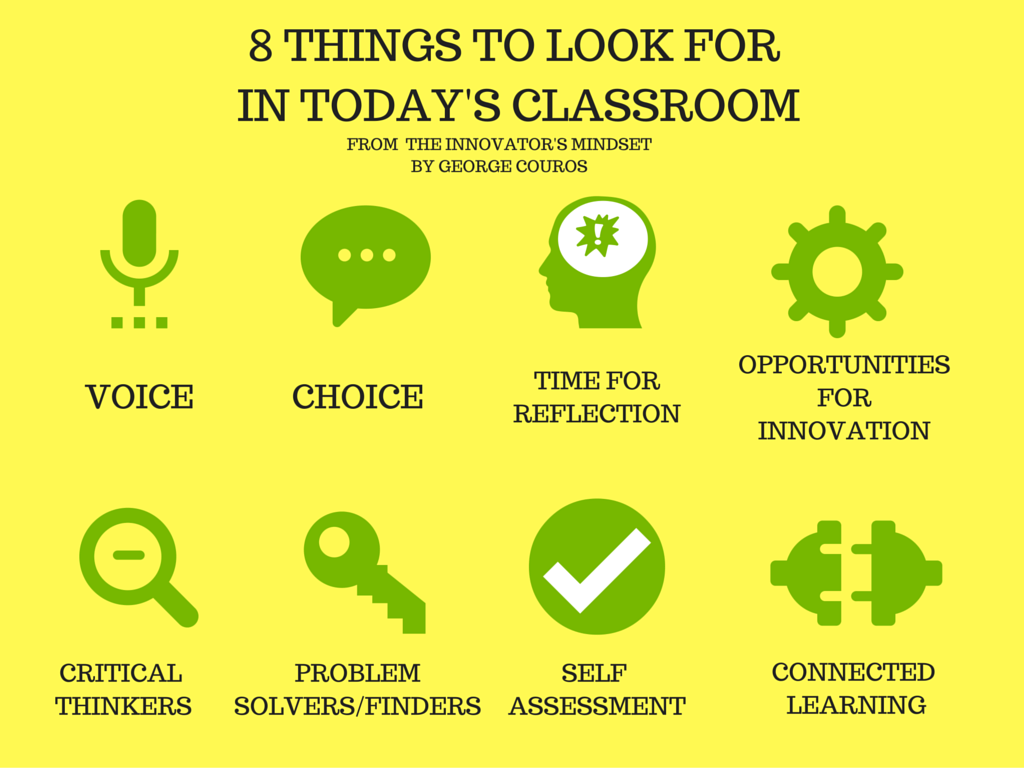This is a compilation of the some of the highlights of the amazing conversations throughout Week 2 of the Innovator’s Mindset MOOC #IMMOOC. To join the conversation, check out IMMOOC.Org, #IMMOOC on Twitter, or join us on Facebook.
Thanks to a great kick off #IMMOOC show with Brady and Shawn, many of us were inspired to reach out and connect with people who we can trust, but also who can push us to do better. Shawn shared that Brady challenged her to visit 500 classrooms to ensure she was in touch with what was happening and the needs of the learners in their district.
Isadel and Fanny posted this awesome video reflection to share what they are learning and how they are supporting each other.
I love Fanny’s question at the end, “How do we move from innovative thinking to doing?” Many of the highlights this week include ideas, reflections, and examples to help us move toward more innovative practices in education.
Molly & Alicia shared the impact that a critical friend has had on their development,
When you find a person that pushes you, encourages you and reflects with you, your teaching becomes so much more powerful. Part of having an innovator’s mindset, in my opinion, is finding your people without a person who is walking down that same path with you, you are way less likely to take risks, to know failure really isn’t failure if you reflect and learn from your experience.
Do you have people who challenge your thinking and push you to do better? Do you challenge others or maintain the status quo? If the answer is no to either of these questions is no, I challenge you to think about finding a critical friend or network. Too often, when we are isolated in our schools and classrooms, we fail to share our greatest strengths and challenges to improve our practice.
One of the major themes was acknowledging and moving beyond the fear the unknown. Tara Martin challenges us to confront these fears,
What are you so afraid of? What’s the worst thing that can happen? I love this filter. The “worst things” in our head are often this facade of terror appearing as an enormous mountain when it’s simply a hurdle we can easily step over.
Anne Krolicki delves deeper into this and shares her shift in thinking:
We have lots of reasons why we say we shouldn’t let our students take their own wheels and steer their own ships. We think they aren’t ready, or they seem unmotivated, or (insert any number of excuses here). More and more, though, I realize that it isn’t that they CAN’T take control; it’s more that I can’t seem to let them. As a teacher who desperately wants my students to love learning and grow academically, socially, and emotionally, I feel better when I have a perfect plan, but what I learned in the #IMMOOC reading this week is that rather than having the perfect plan, I need to ask the perfect questions. And then, I need to let each student come to the answer in his/her own way while I help them all get there in whatever ways I can.
Creating the Conditions for Learning and Innovation
When teachers can empower learners to take part in their learning and move from teaching the perfect lesson to inspiring awesome learning experiences, amazing things can happen. This shift can happen in individual classrooms and even more so when networks of teachers collaborate and inspire one another. However, to move from these pockets of innovation to a culture that encourages teachers to take risks and values the process of learning, not just the product, leaders need to embody the characteristics of the Innovator’s Mindset too.
Aaron Hogan describes the importance of leading by example as a starting point,
Innovation, creativity, and change are not ushered in through announcements. Most of what is worthwhile in education just isn’t brought about that way….I am a big believer in the idea that models accelerate learning. But although modeling well is crucial for our success and the success of others (especially as innovators), I think we’re fooling ourselves if we believe that being a model is enough to lead widespread innovative change on any significant scale.
Check out Aaron’s full blog post for some great questions that will push your thinking about each of the 8 Characteristics of the Innovator’s Mindset.
Jill Cross also argues that modeling is not enough and highlights the importance of knowing the individuals and meeting people where they are:
I realized a big chunk of my job was actually marketing and that meant figuring out what made each teacher tick, basically rooting around until I found my “in.” Sometimes it required tremendous patience. Just like in a classroom we have to contend with the “not yet” in working with teachers too. There were plenty of times I had to wait for the perfect moment to introduce a new museum strategy or offer to model a lesson for a teacher. Sometimes it was as simple as offering the perfect resource at the perfect time. Other times it meant relying on my prophets to build capacity.
Beyond models, many discussed the importance rethinking how they are creating learning experiences for teachers to ensure they are providing relevant experiences to learn and grow, not just to receive information.
Katie Bradford reflected on how she designed her professional learning to leverage the collective expertise of vast networks:
I am reminded to build in specific opportunities to share, collaborate, and learn not just from me, but from all of the other “experts” in the room. There’s no way I can have all the answers, ideas, and examples for every grade-level and every subject area, but someone in the room might! Moving forward, I hope to continue asking myself these critical questions, and designing trainings that are best for the schools and teachers that I serve. What works for one school and set of teachers, may not be what’s best for another.
To make these shifts in schools, Holly Christian reminds us that we are not just educating our those in our schools.
Students are going to learn in ways their parents never did, so we will have the task of educating parents and defending what we are trying to teach their child, that we have, and always have had, the best interest of the student at the forefront of all we do. Administration, school boards, community members, they will all need an education of their own that schools today are not the schools they attended.
This work is challenging and often uncertain and it’s important that we confront our fears and take steps to move forward. Finding people who can support you, but also push you, can help to make a huge impact in your practice. So as you move forward, my hope is that wherever you are, whatever your role, look at how you can embody the Innovator’s Mindset to impact those your serve.

Best,
Katie













